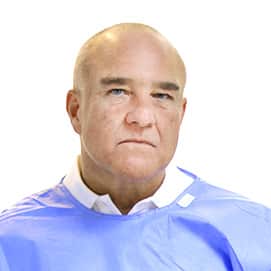About the program
“Your body plus” is a comprehensive examination of the entire body, during which anomalies in the development of organs, inflammatory processes, and oncological diseases can be identified, and at the earliest stages, which makes it possible to prevent the development of the disease or timely treatment.
During the study, degenerative changes in the spine, herniated discs, various lesions of the spinal cord can be detected, an assessment of the state of the vascular system is carried out: vascular changes (heart attacks, ischemia, vascular encephalopathy, narrowing or expansion of blood vessels - stenosis or aneurysm), assessment of the condition of bones and soft tissues.
Without resorting to invasive interventions, you will receive pictures from the inside of the body in a three-dimensional image and see how your internal organs function.
A preventive examination will provide you with the "Status Quo" of your health.
“Your body plus” program
Medical history interview with the chief of the radiology clinic (patient's medical history, current health concerns, symptoms, lifestyle habits, family medical history, identifying risk factors)
Comprehensive Blood Tests
- clinical blood test with leukocyte formula
- biochemical blood test (liver and kidney tests, carbohydrate and lipid metabolism, proteins and protein fractions, electrolytes, blood clotting parameters)
- blood test for thyroid hormones (to assess its function)
- blood test for pancreatic hormones (for the diagnosis of diabetes mellitus at the preclinical stage, as well as diseases of the pancreas)
- for men: test for prostate specific antigen (PSA)secreted by cells of the prostate gland (to diagnose prostate cancer and monitor the treatment of existing prostate disease)
Magnetic Resonance Imaging (MRI) Brain Scan
What is this?
Imaging method of internal organs and soft tissues based on exposure
magnetic field on the human body at the molecular level. Computer fixes
response of the body to this effect and interprets it in the form of a clear
layer-by-layer image of internal organs and soft tissues of the body.
For what?
MRI is performed to diagnose diseases at an early stage. Advantage
of this method of examination lies in the fact that the patient is not exposed to
X-ray exposure, while the quality of diagnosis is not reduced.
MRI of the head includes examination of the diencephalon and medulla oblongata,
pituitary gland, epiphysis, cerebellum, cerebral hemispheres, its membranes,
vessels, ventricles, cerebrospinal fluid pathways, as well as the skull, ENT organs and
contents of the eye sockets, This method is especially effective in identifying
benign and malignant tumors, metastases, foci of infection,
vascular disorders, atherosclerotic plaques, aneurysms, cysts. In addition, with his
with the help of detecting diseases in the area of the eye orbits, paranasal sinuses,
nasopharynx.
Magnetic Resonance Imaging (MRI) Neck Scan
Magnetic Resonance Imaging (MRI) Breast Scan
Magnetic Resonance Imaging (MRI) Abdominal Scan
Magnetic Resonance Imaging (MRI) Pelvic Scan
Magnetic Resonance Imaging (MRI) Spine Scan
Magnetic resonance angiography (MRA) of Blood Vessels / Full Body MRA
What is this?
Method for obtaining a three-dimensional image of the main and peripheral vessels with
intravenous administration of contrast agents.
For what?
MRA is used to detect congenital abnormalities of the blood vessels,
atherosclerotic deposits, areas of narrowing and blockage of arteries, consequences
stroke, as well as the diagnosis and subsequent choice of methods for treating diseases
blood vessels.
Application of Contrast Media (CM)
Echocardiography (EchoCG) - ultrasound examination of the heart's structure, chambers, valves, and blood flow patterns
What is this?
Non-invasive study by ultrasound diagnostics of all structures of the heart in the process of its work.
For what?
Using this method, the wall thickness, the volume of the heart cavities, the condition and functioning of the valvular apparatus, the contractile function of the heart muscle are determined, intracardiac hemodynamics, blood flow parameters in the heart chambers are examined, intracardiac thrombi, neoplasms, heart aneurysm, heart defects are detected.
Doppler Ultrasound Scan of Neck Vessels
What is this?
A combination of ultrasound diagnostics and color coding of moving blood with a two-dimensional image of the lumen and vessel walls.
For what?
Ultrasound and DS of extracranial and intracranial vessels helps to identify obstructions to blood flow, arterial and venous aneurysms, occlusion of the vessels of the base of the brain and vertebral artery, to assess the degree of stenosis of the carotid arteries and atherosclerotic lesions, to determine the spasm of the cerebral arteries.
Ultrasound Doppler Doppler and DC of neck vessels carried out to assess the condition of the walls of blood vessels and analyze blood flow. In this way, the thickness of the internal vascular wall is determined, circulatory disorders in the carotid arteries, areas of thrombosis or compression of blood vessels, as well as the presence of atherosclerotic deposits are detected.
Ultrasound Scan of the Thyroid Gland and Soft Tissues of the Neck
What is this?
A non-invasive method for obtaining images of internal organs using ultrasound.
For what?
Ultrasound of the thyroid gland and soft tissues of the neck allows you to reliably judge the state and size of the thyroid gland and identify areas of heterogeneity in its tissues. The results of the examination indicate the presence or absence of nodular pathology of the thyroid gland, cysts, inflammation.
Electrocardiogram (ECG)
What is this?
Method for studying the heart muscle by recording bioelectrical signals of the heart at rest from the body surface.
For what?
For the diagnosis of cardiac arrhythmias and other pathologies of the heart (cicatricial changes, ischemia, etc.).
Blood Pressure Monitoring
Exercise Electrocardiography (Exercise Bike Stress Test)
Lung Function Tests (Spirometry)
What is this?
A method for studying the function of external respiration, including the measurement of lung volumes, as well as speed indicators of pulmonary ventilation.
For what?
Used to assess the functional state of the respiratory system.
Medical reports of all examinations
Disks with a "geographic map" of the body and the resulting images
Presentation of the scan results on the monitor
Concluding discussion with the chief of the cardiology clinic regarding examination findings, followed by potential treatment prescription if required.
Concluding discussion with the chief of the radiology clinic regarding examination findings, followed by potential treatment prescription if required.














